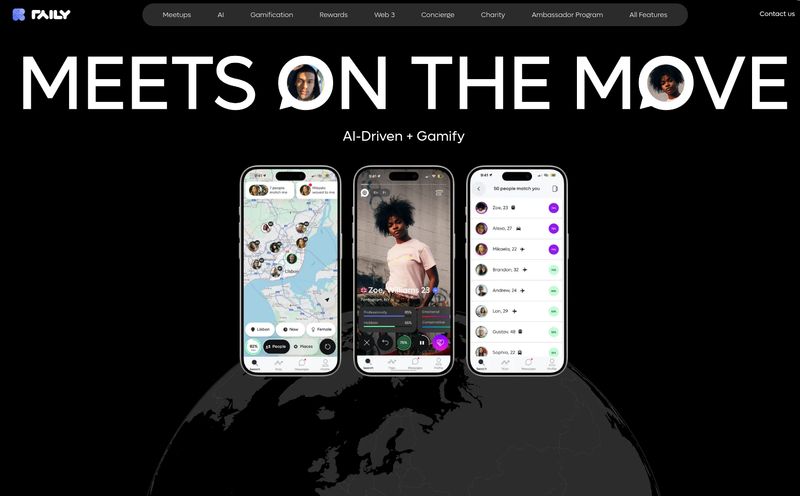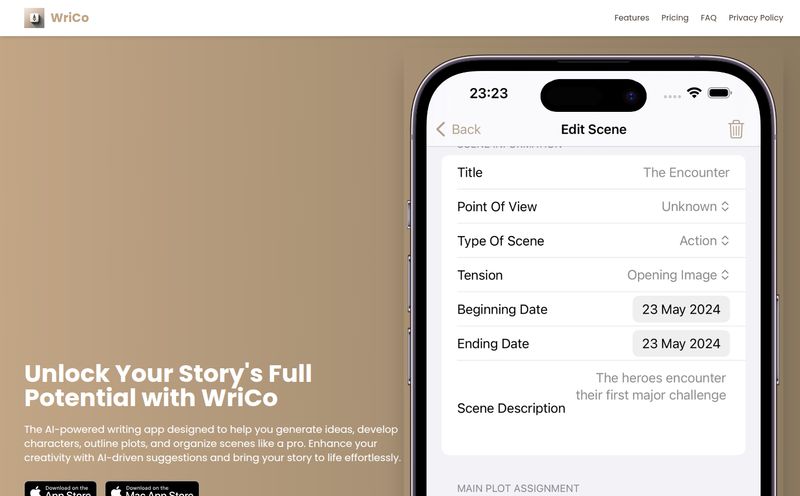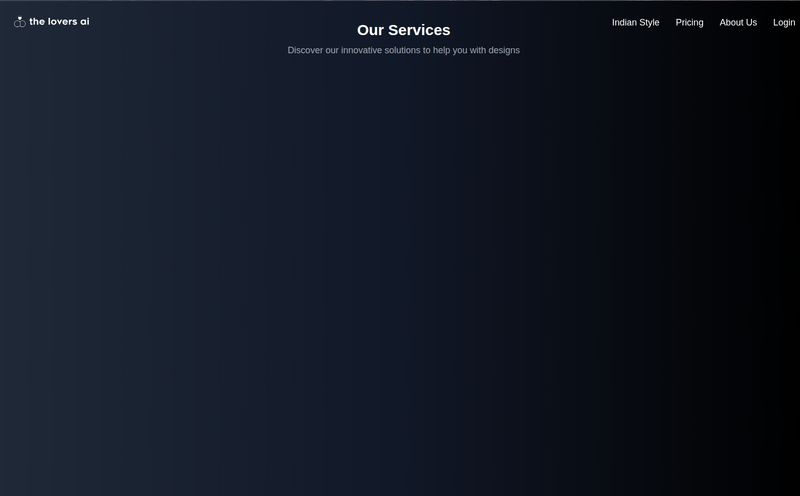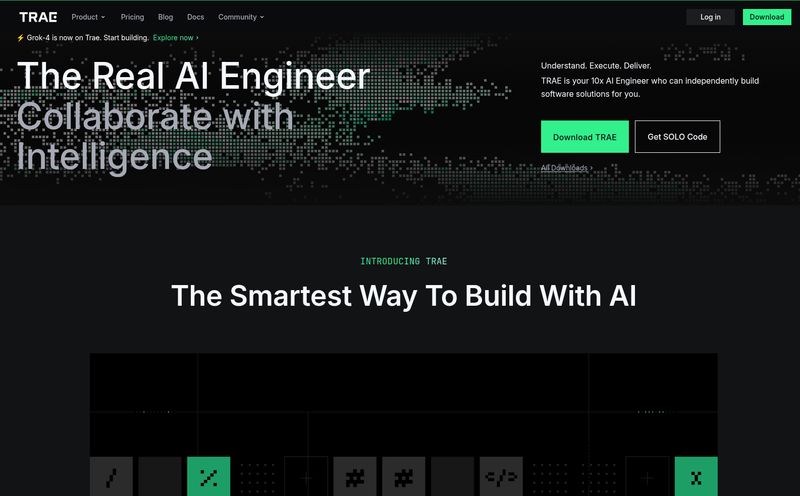If you’re in the digital space—whether you're a blogger, a developer, or a marketer—you know the drill. We're all in a constant scramble for high-quality, unique visuals. Stock photos are… well, they’re stock photos. And high-end AI image generators can sometimes feel like you need a master's degree in prompt engineering and a venture capital-backed budget to get anything decent out of them.
So, when a tool like 4oimageapi.io slides across my desk (or, more accurately, my browser), I'm naturally skeptical. It promises affordable, precise AI image generation. Sounds great, right? But we’ve heard that song before. I decided to pop the hood and see if the engine actually runs, or if it's just a pretty shell. And I gotta say, I'm pleasantly surprised.
So, What is 4oimageapi.io Anyway?
In simple terms, 4o Image API is a service that lets you tap directly into the power of OpenAI's advanced image models—specifically, what they call the GPT-image-1 model. Instead of you having to wrestle with complex setups or paying premium platform fees, this API acts as a bridge. It's like having OpenAI's master painter on retainer, but without the hefty gallery fees. You send it a request, it does the magic, and you get a high-quality image back.
For the more technically inclined, it’s a RESTful interface. For everyone else, that just means it’s designed to be straightforward to integrate into your existing website, app, or workflow. No weird proprietary software to learn. Just clean, simple API calls.
The Features That Actually Matter
A feature list is just a list until you know how it actually helps you. Here’s my breakdown of what 4o Image API brings to the table.
Text-to-Image and Image-to-Image: The Creative Duo
This is the bread and butter of any AI image tool. You can type out a description—
A photorealistic image of a cat wearing a tiny wizard hat, studying a glowing orb
—and get a picture. That's Text-to-Image. But what I find increasingly useful is Image-to-Image. You can upload an existing image or a rough sketch and ask the AI to transform it. Want to turn a product photo into a watercolor painting? Or take a simple line drawing and render it in a stunning cinematic style? This is how you do it. It’s incredibly powerful for maintaining a consistent brand aesthetic while still creating fresh content.
Getting Styles and Text Just Right
Okay, let's be honest. Getting AI to generate legible, correctly spelled text inside an image has been one of the biggest jokes in the industry for years. You’d get something like “SLALE DAAY!” when you asked for “SALE DAY!”. It’s frustrating. 4o Image API claims “Precise Text Rendering,” and from what I've seen, it's a huge step in the right direction. It's not 100% perfect every single time (no AI is), but it's leaps and bounds better than many others I've tested. This, combined with its ability to switch between a ton of artistic styles—from photorealistic to anime to abstract—makes it a seriously versatile tool.
Prompts That Actually Listen
My biggest pet peeve with some generators is when they completely ignore a key part of your prompt. You ask for a blue car and it gives you a red one. Why? 4o Image API emphasizes its “Custom Prompt Adherence.” It’s trained to pay close attention to the details you provide. This means less time regenerating images and tweaking prompts, and more time actually getting the asset you need. A huge time-saver.
">
My Honest Take: The Good, The Bad, and The... Interesting
No tool is perfect. Here's where I think 4o Image API really shines, and where you might want to pause for thought.
The Wins: What I'm Genuinely Excited About
First off, the affordability. While I couldn't find a dedicated pricing page (more on that in a sec), the entire branding is built around being a cost-effective solution. In an industry where costs can spiral out of control, this is a massive plus. The quality of the images is also top-notch, thanks to its OpenAI backbone. You're getting premium results without the premium price tag.
I was also impressed by the talk of high-concurrency support and 99.9% uptime. What does that mean for you? It means the service is built to handle a lot of requests at once without falling over. If you're building an application that will have many users generating images, this is critical. It’s a professional-grade setup. And they mention 24/7 support, which is the kind of safety net that helps you sleep at night when you've integrated an API into a live product.
A Few Caveats to Keep in Mind
Now for the other side of the coin. The documentation mentions an average response time of 24.7 seconds. Let's be clear: this isn't for a real-time chat application where a user is waiting for an instant image to appear. It's just not built for that. However, for generating blog post headers, social media assets, or marketing materials in the background, half a minute is perfectly acceptable. It’s a trade-off for quality and cost, and one I think is pretty reasonable.
The other point is its reliance on a single core model: GPT-image-1. This is both a pro and a con. It’s a pro because you get consistency. It’s a con because your eggs are all in OpenAI's basket. If they change the model or its pricing, that will ripple down. But honestly, that's a risk with almost any API-based service these days.
">
Let's Talk Money: The Pricing Situation
This is the part that got a bit weird. The platform screams “affordable,” which is fantastic. But when I went looking for their pricing page, I hit a 404 error—the dreaded “This page could not be found.” It could be a temporary glitch, or maybe they're updating it. Who knows. So, I can’t give you a neat little table with price per 1,000 images. Bummer, I know.
My advice? Don't let the broken link deter you. Head to their main site, 4oimageapi.io, and look for a 'Contact' or 'Get Started' button. Based on their 'transparent pricing' promise, I'm guessing they have a clear, usage-based model. You’ll just have to check directly for the most current details. Its a small hoop to jump through, but likely worth it if the cost savings are real.
Who Is This API Really For?
"I could see this being a secret weapon for small marketing agencies and solo content creators who need to punch above their weight class visually without breaking the bank."
This isn't for everyone, but for some people, it's going to be a perfect fit. I see it being most valuable for:
- Developers & Startups: Anyone building an app or service that needs programmatic image generation will love the simple RESTful API and the robust backend.
- Bloggers & Content Creators: Need a unique featured image for every single post? This is way better and more creatively fulfilling than scrolling through Unsplash for the 50th time.
- Marketing Agencies: Quickly creating mockups, social media visuals, and ad creatives at scale could be a massive workflow improvement.
- Small Businesses: Create professional-looking product lifestyle shots or promotional materials without hiring a photographer for every little thing.
">
Conclusion: Is the 4o Image API Worth Integrating?
After digging in, I'm genuinely optimistic. The 4o Image API feels like a solid, no-nonsense tool built for people who need to get things done. It smartly focuses on the essentials: high-quality output, reliable service, and an affordable price point. It’s not trying to be the flashiest or the fastest tool on the block, but it aims to be one of the most practical.
If you're looking for an instantaneous, free-for-all generator, this ain't it. But if you're a professional or a developer looking for a stable, high-quality, and cost-effective AI image generation API to build into your projects, I think you should absolutely give 4oimageapi.io a serious look. It might just be the workhorse you’ve been searching for.
Frequently Asked Questions
What AI model does 4o Image API use?
It is powered by OpenAI’s GPT-image-1 model. This gives it access to some of the most advanced image generation technology currently available, which is why the output quality is so high.
Is 4o Image API good for beginners?
For developers, yes. The RESTful API is a standard and straightforward way to integrate a service. For non-developers who just want to generate an image, you'd need to use a tool or interface that has integrated the API. The service itself is designed to be plugged into other applications.
How long does it take to generate an image?
The company states an average response time of around 24.7 seconds. This is a bit slow for real-time applications but is perfectly fine for most content creation and asset generation workflows where you're not waiting on the image to continue a conversation.
What makes it different from using DALL-E or Midjourney directly?
The main differences are integration and potential cost. 4o Image API is designed to be easily integrated into your own apps, websites, or automated workflows. While you can get API access to some models directly, this platform packages it with promises of high uptime, concurrency support, and a focus on affordability, potentially offering a better value for high-volume use cases.
Can I use the images for commercial purposes?
Generally, images created by AI models like those from OpenAI can be used for commercial purposes, but you should always check the latest terms of service from both 4oimageapi.io and OpenAI to ensure you are in full compliance with their usage policies.
Reference and Sources
For the most up-to-date information on features and to get in touch regarding pricing, please visit the official website:
- 4oimageapi.io Official Website
- Information about OpenAI's models and policies can typically be found on the OpenAI website.



